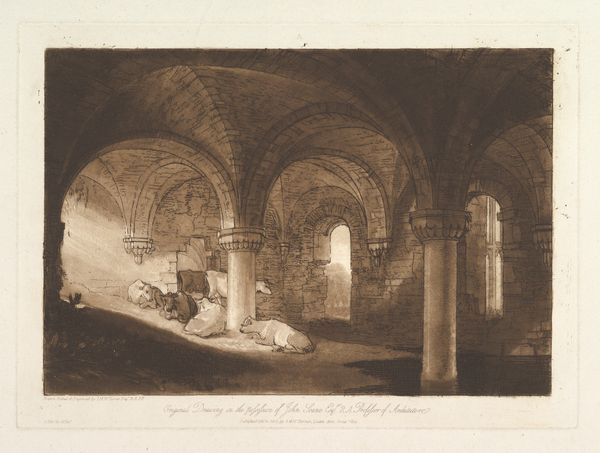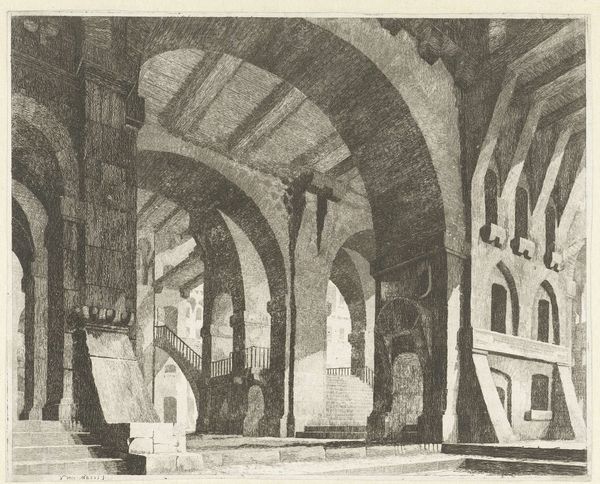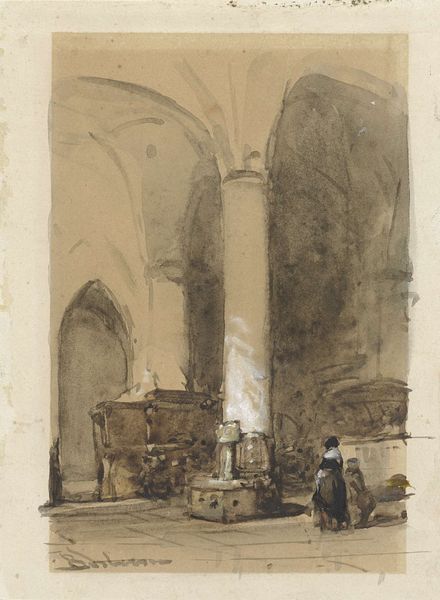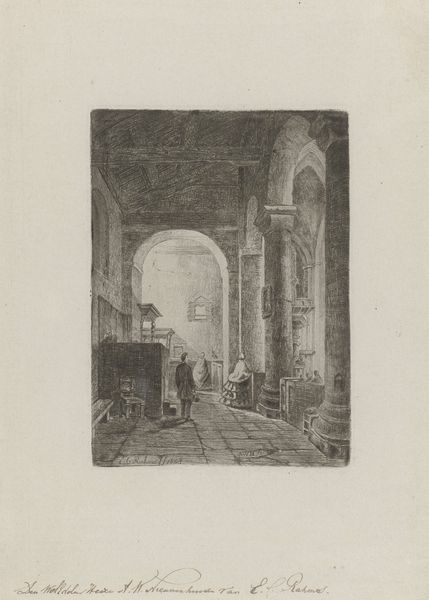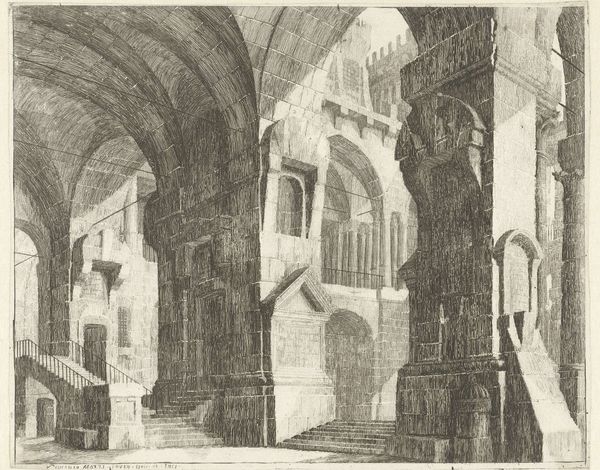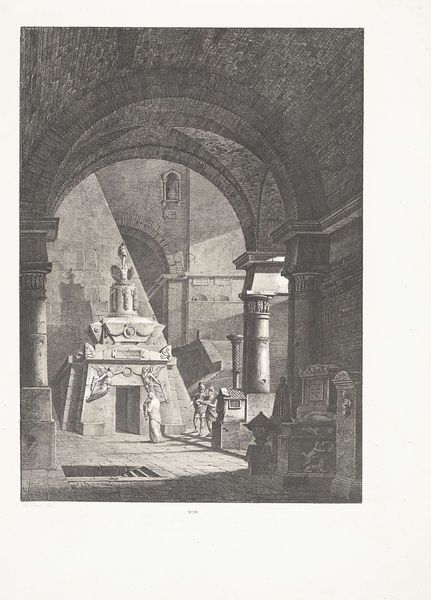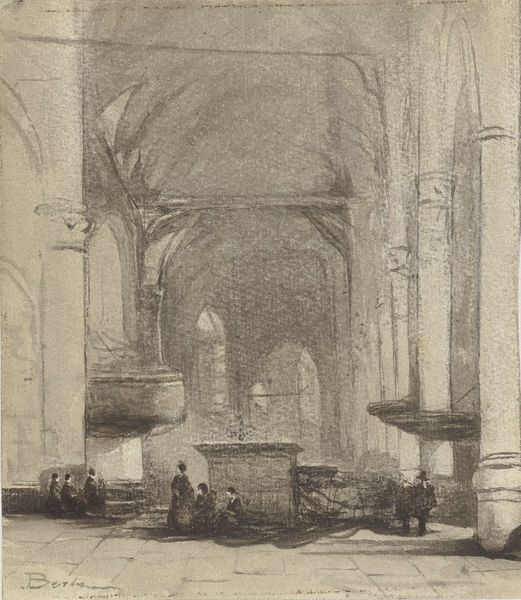
drawing, paper, ink, architecture
#
portrait
#
drawing
#
medieval
#
sculpture
#
landscape
#
figuration
#
paper
#
historic architecture
#
traditional architecture
#
ink
#
romanticism
#
19th century
#
genre-painting
#
architecture
Dimensions: height 105 mm, width 160 mm
Copyright: Rijks Museum: Open Domain
Editor: So, this is "Kloostergewelven met monniken" – or "Monastery Vaults with Monks" – made in 1844 by Hippolyte Victor Valentin Sebron. It's a drawing done with ink on paper, and there's a rather melancholic feel to it, the muted tones accentuating a sense of quiet contemplation, almost solitude. What do you see in this piece? Curator: Well, immediately my eye is drawn to the labor embedded within. Consider the production of the ink itself – the gathering of materials, the grinding, the mixing. It’s a craft-based process rendered in the service of depicting what? An imagined medieval scene. There’s a tension there, a 19th-century artist romanticizing a pre-industrial world with the very tools that industrialization was changing. Think also about the social context of monastic life; how the labour and the making becomes devotional. Editor: That's fascinating! I hadn’t considered the contrast between the artwork’s subject matter and its creation. It makes me think about how readily available these materials are today. Do you see that romanticized element as a commentary? Curator: Precisely! Sebron's choice of subject highlights the changing dynamics of labor and spiritual practice of his time. Are those monks actively producing anything beyond their prayers? This links back to how we consume images of the past, often divorced from the means and conditions that made them materially possible. Editor: So, we are left to wonder how our current means of production will be viewed by future generations? Curator: Indeed. By analyzing the material history and cultural context, we gain a deeper appreciation, not just of this drawing, but also how we ourselves create and consume in the present. Editor: I will definitely think more critically about artistic labor moving forward. Thanks!
Comments
No comments
Be the first to comment and join the conversation on the ultimate creative platform.
